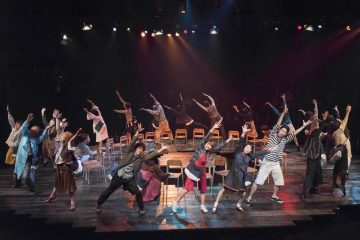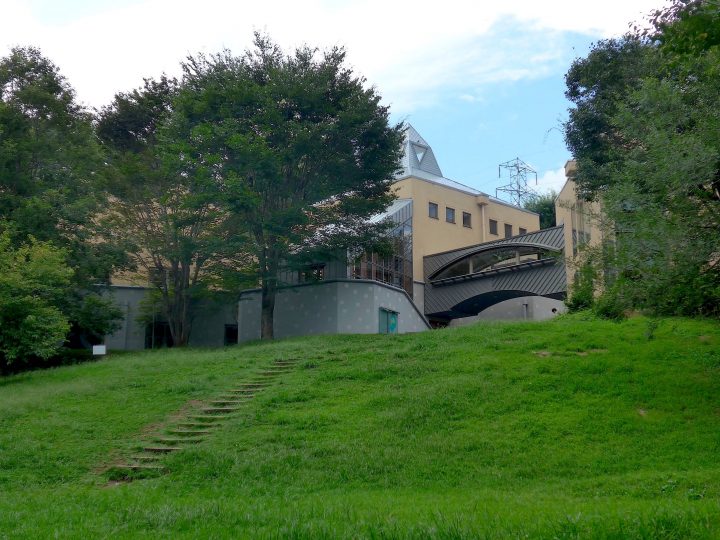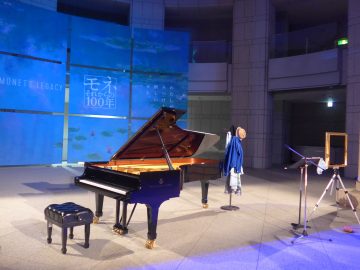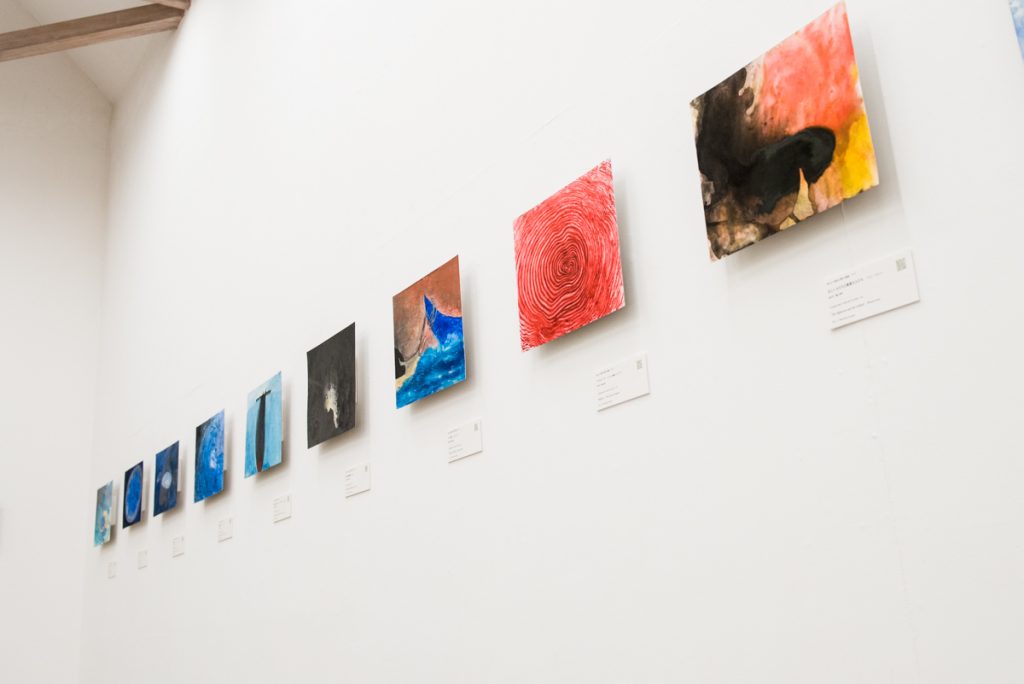
The Kanagawa Prefecture Artist in Residence Promotion Project invites artists from Japan and abroad to Kanagawa Prefecture and supports groups that engage in creative activities. This time, we visited the Kasuya no Mori Museum of Contemporary Art, where a special exhibition titled "What Myths Tell Us Now - Myths of the End and Resurrection of Humanity" is being held, inviting the American-based painter Yuriko Yamaguchi.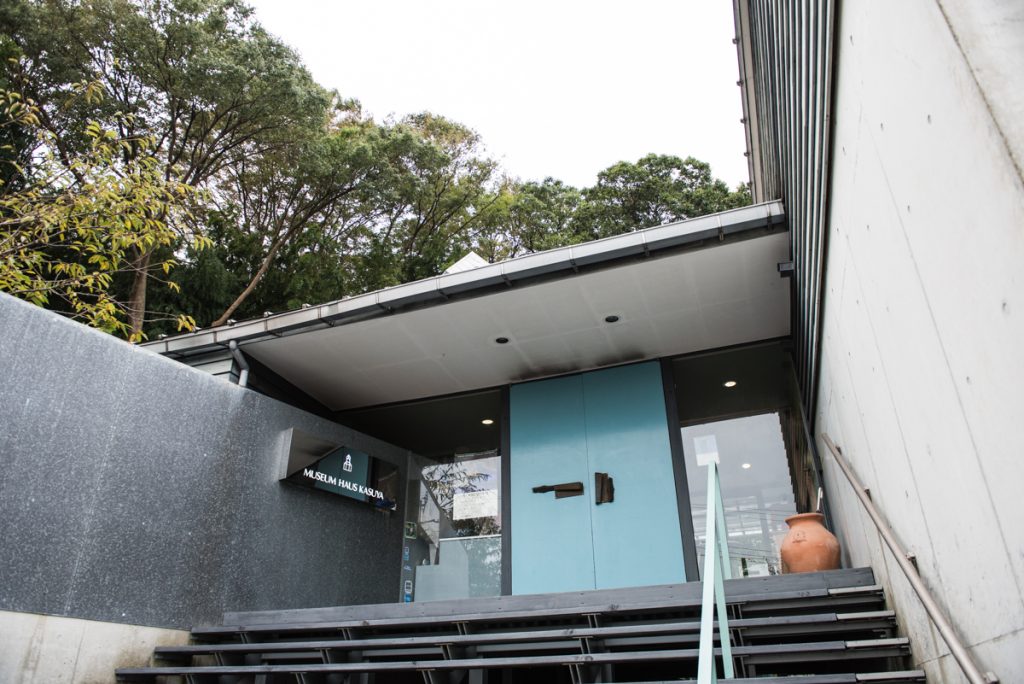
Born in Japan and later moving to the United States, Yamaguchi earned a master's degree in plastic arts and has been active as an artist, mainly in the United States, for over 40 years.
This exhibition features 30 paintings that Yamaguchi created in collaboration with Mineke Schipper (Netherlands), who has been researching intercultural literature for many years. At the opening, Yamaguchi made his works publicly, and there was also a gallery talk with anthologist Masao Azuma.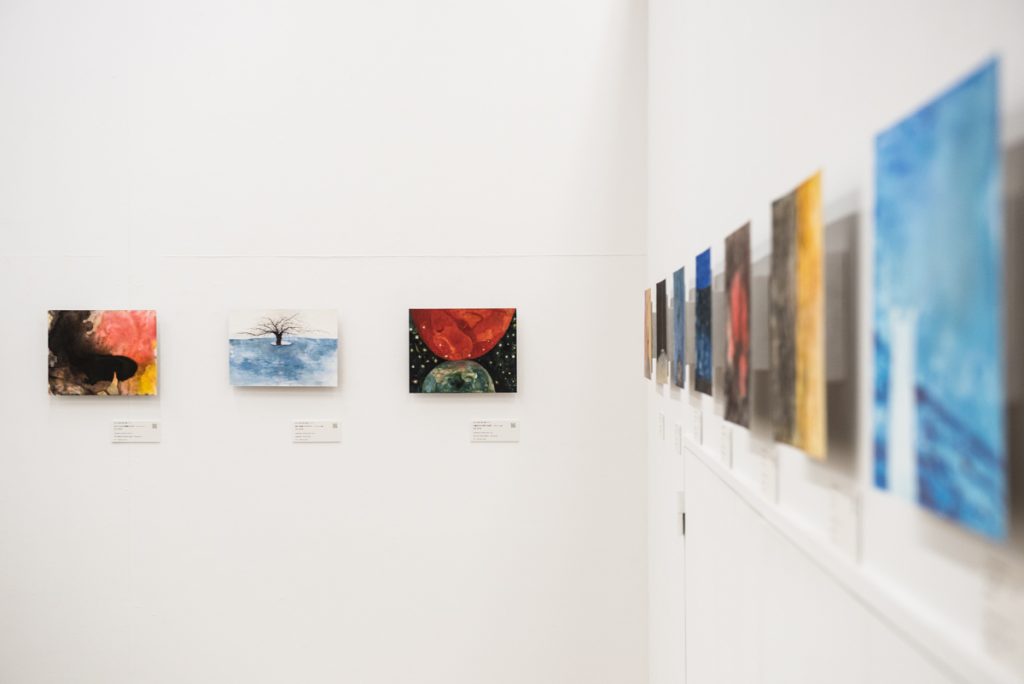 The museum director, Eiichi Wakae, and Yamaguchi have been friends ever since they met by chance at a gallery in Soho, New York in 1989. We spoke to the two about this project.
The museum director, Eiichi Wakae, and Yamaguchi have been friends ever since they met by chance at a gallery in Soho, New York in 1989. We spoke to the two about this project.
What was the origin of this project?
I met Yamaguchi Schipper in 2009, when I was staying at the Rockefeller Foundation Bellagio Center in Italy for a month and creating watercolor paintings. At that time, she was focusing on "myths" that remain around the world. At the Bellagio Center, I was researching and collecting myths about floods and disasters from around the world in order to present them.
We tend to think of myths as stories from long ago, but they are full of many episodes that provide important hints when thinking about today's global environmental issues. I have always had a strong interest in global connections and "chains," so I hit it off with Ms. Schipper. We talked about how "when announcing research results, it is more appealing to people if they are accompanied by visuals," and I decided to create visuals for each of the myths she had collected.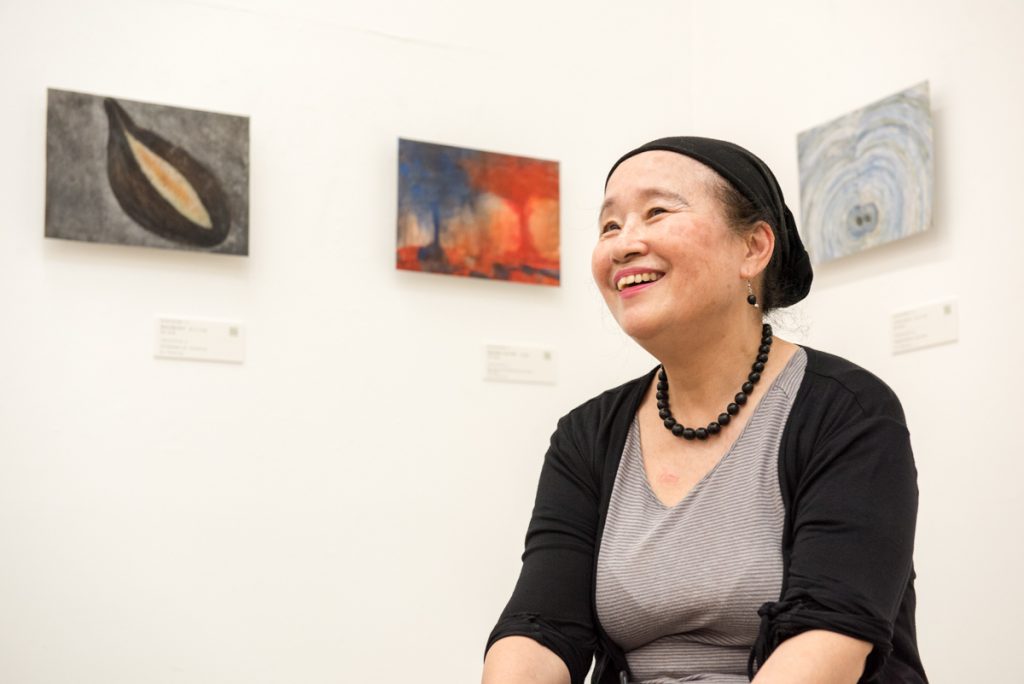
Just as there are illustrations in Wakae's novels, text and visuals have been connected for a long time. However, Yamaguchi's illustrations are not explanatory like illustrations. It may take a long time to explain "why this visual came to be," but it is definitely connected to Schipper's text. I hope you will enjoy this sense of distance.
Yamaguchi: In the end, we ended up with 30 pieces, but there were quite a few pieces that Schipper rejected. There was one piece that I wasn't satisfied with, so I took the original drawings to the Netherlands to show him, and it was revived. I think the impression was different because we were communicating while looking at the monitor.
The art materials used in this work are different from those used in Yamaguchi's previous works.
Yamaguchi: I use synthetic paper called "Yupo," which is made primarily from polypropylene. I chose it because I liked its smooth feel, but water doesn't penetrate it, so I can't paint with watercolors, so I tried using acrylic paints.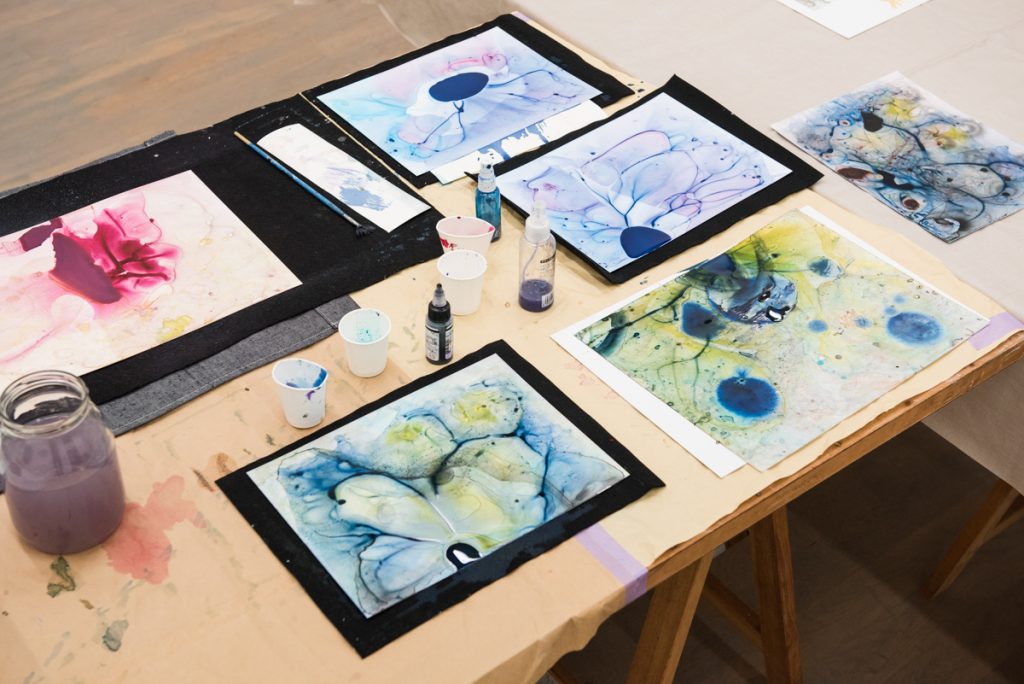
Wakae: Normally, acrylic paint dries quickly, but Yamaguchi mixes it with a lot of water. Because YUPO doesn't absorb water, he was able to create unique expressions by "dripping" the paint onto the paper.
Yamaguchi: This is a technique I tried for the first time in this project. The combination of YUPO and acrylic paint is impossible to control, and it produces unexpected results, which is fun (laughs). When creating something, if it's not fun, you can't continue.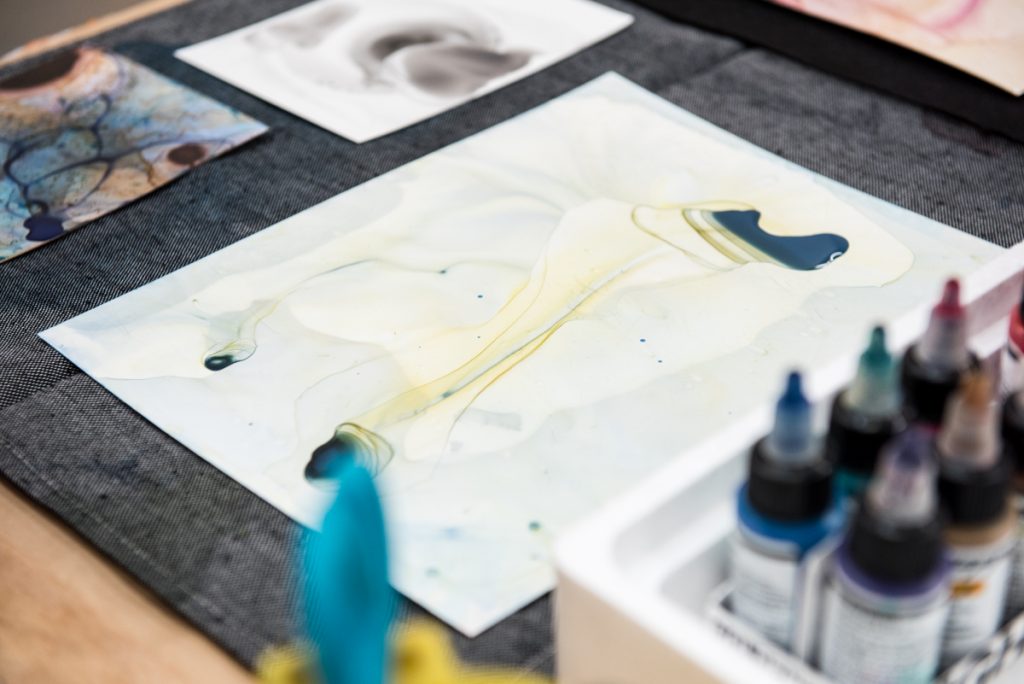
This is the first time that all 30 pieces will be exhibited at the Kasuya Museum of Contemporary Art.
Yamaguchi : That's right. It ended up taking nearly 10 years, so seeing all the works lined up like this is quite moving.
I had seen the story and images of the Wakae myth, but some of the pieces were replaced along the way. It wasn't until I unpacked the items that I found out which pieces would be exhibited in Japan in the end (laughs).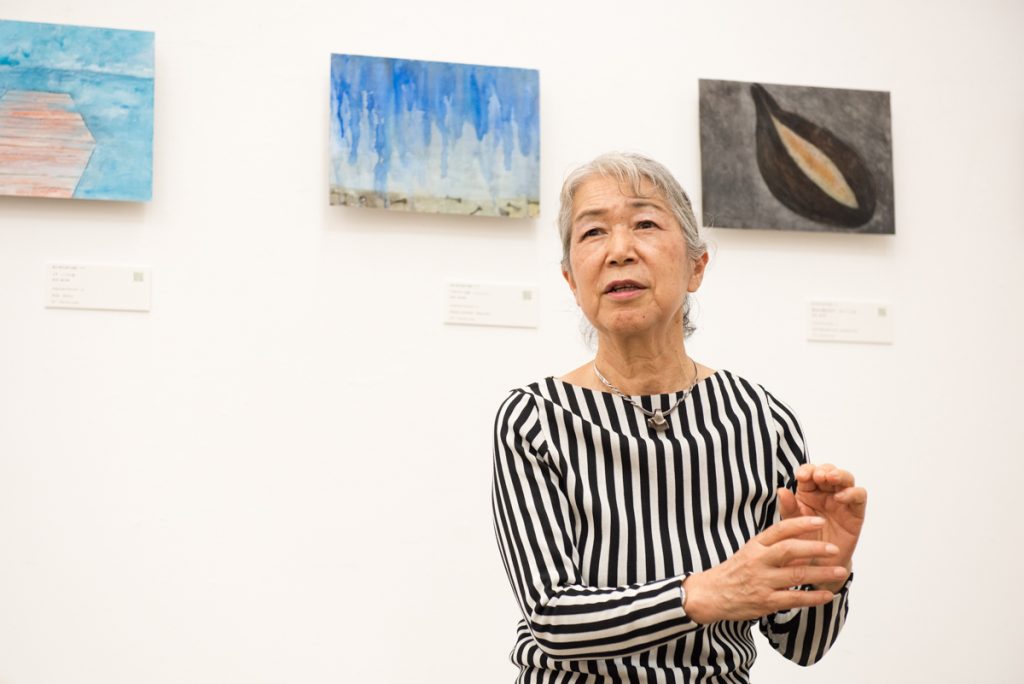
My greatest wish is that Yamaguchi Shipper's thoughts will be conveyed to the viewers.
It must have taken a huge amount of time for Wakae Schipper to collect and edit the myths. However, it takes even longer for myths to be created. It is the artist's power to visualize the myths that have continued unbroken in an era that is relevant to the times. And I think there is a warning to modern society in that.
The presence of scholars who collect Yamaguchi myths is also important.
Wakae : Of course. The works on display this time are translations for the "present" age, and in a thousand years' time, works with different approaches may emerge. I was reminded once again that collaboration between scholars and artists is truly wonderful.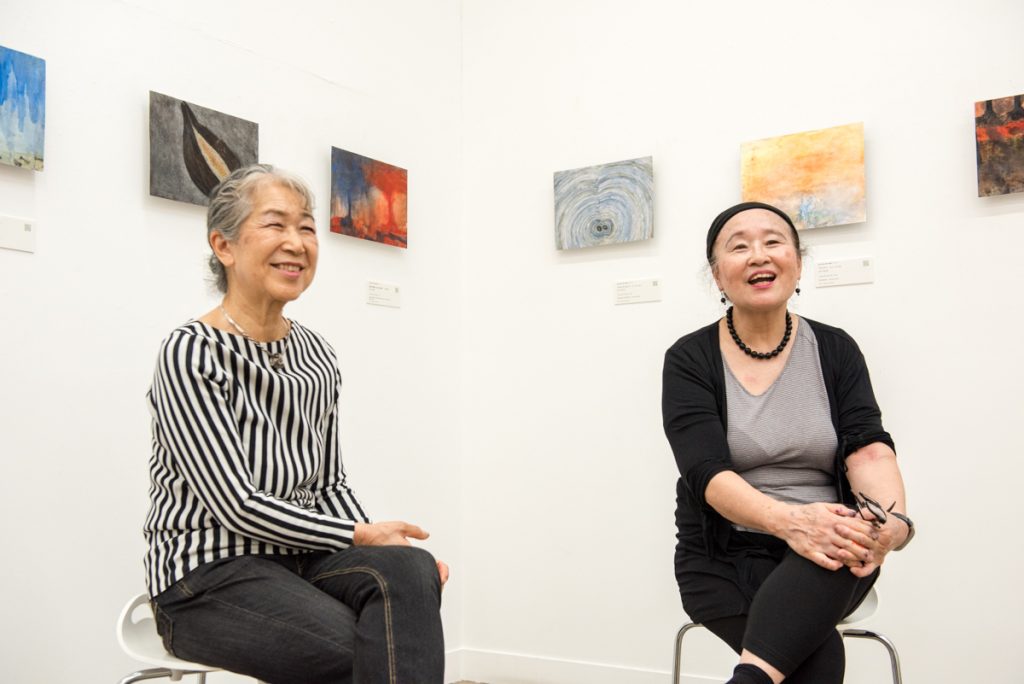
What myths tell us now – the myths of the end and resurrection of humanity –
Essays and Selected Myths by Minneke Schipper
Artwork by Yuriko Yamaguchi
Venue : Kasuya Forest Museum of Contemporary Art
http://www.museum-haus-kasuya.com/
Period : Until December 23rd (Sun)
Closed : Mondays, Tuesdays, Wednesdays
Opening hours : 10:00-18:00 (entry until 17:30)
*During the event, on Friday, November 23rd and Sunday, December 2nd, public viewing will be limited to 12:00 p.m. due to reservation-only events.
[Access to the museum]
■About 15 minutes walk from Kinugasa Station on the JR Yokosuka Line
■Get off at Shioiri Station on the Keihin Kyuko Line, take the bus bound for Kinugasa Station for about 15 minutes, get off at Kanaya bus stop, and walk for about 4 minutes
